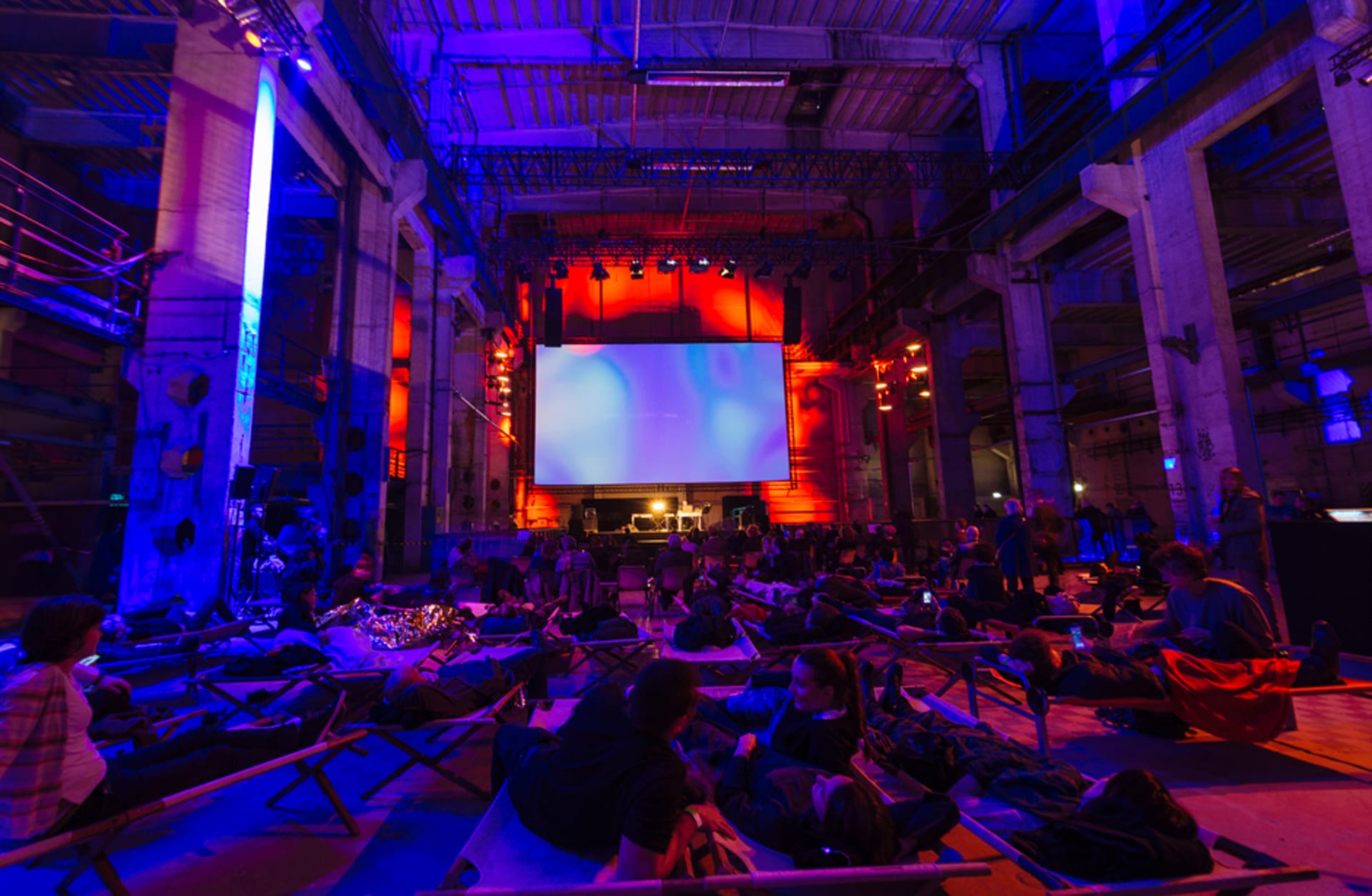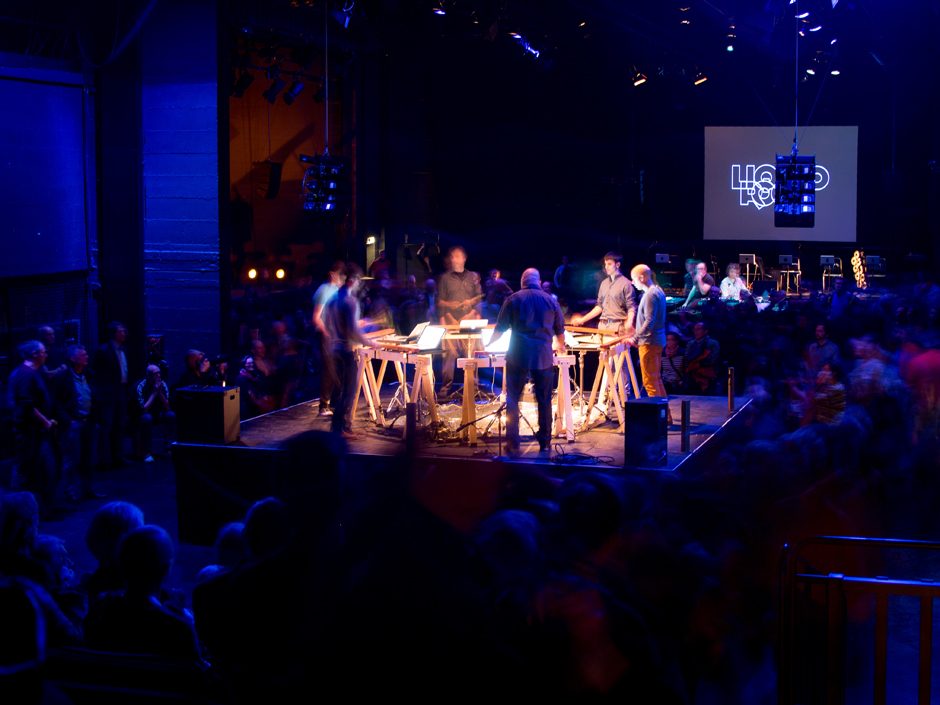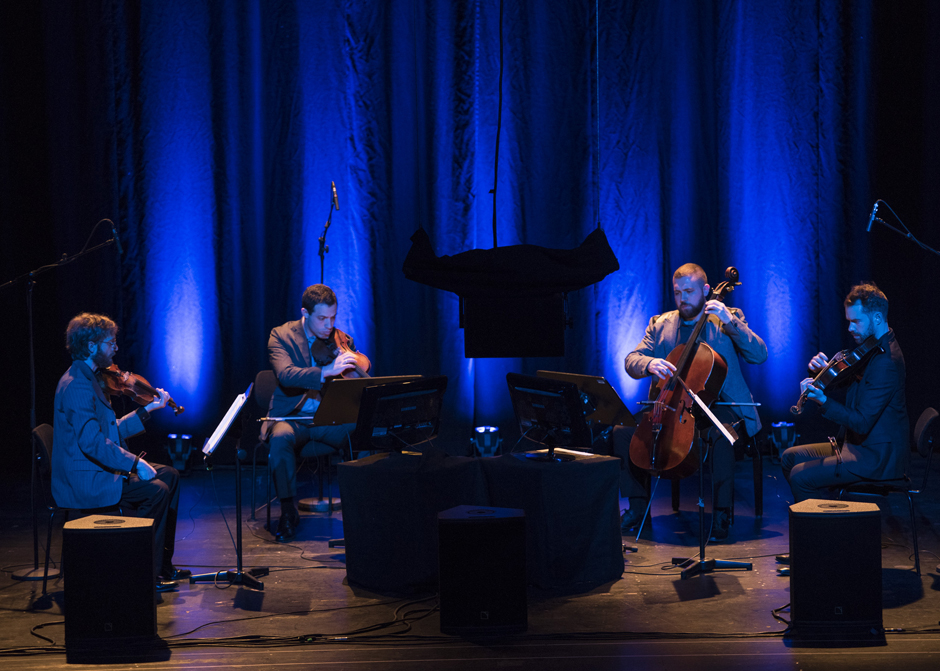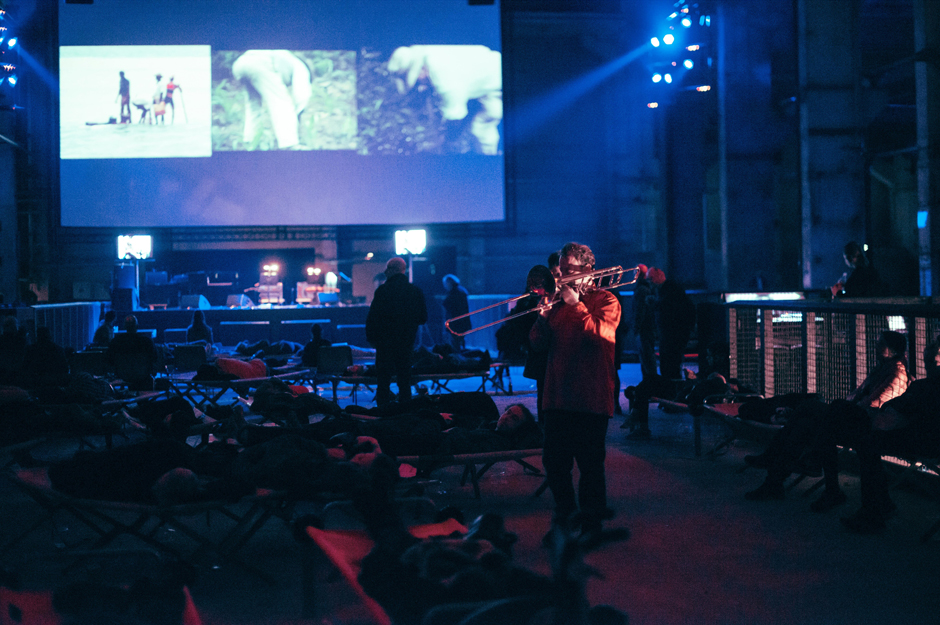
How Experimental is Weird Techno? MaerzMusik Reviewed
Report: Daniel Gottlieb
I’ll admit first thing that I’ve mulled over a number of cynical thoughts since before Berlin’s MaerzMusik Festival even began. The ten-day music and art festival operates under the aegis of the long-running Berliner Festpiele, and this year set out to explore “Contemporary Time Issues,” which seemed to me like the kind of catch-all mantra that operates both as a curatorial prop and as a means of distinguishing one festival from the many others on Germany’s calendar. The bill mostly featured artists from the self-enclosed domain of modern classical and chamber composition, which means that most of the names have never appeared on Electronic Beats and may never surface here again. So I struggled to understand my role as a critic there, because I couldn’t quite see why would any of our readers be interested in a report on unfamiliar musicians.
Nevertheless, the program genuinely intrigued me, and I ended up at the opening night on March 20. Well-dressed men and women mingled in the foyer, their silhouettes illuminated by the light pouring through Haus der Berliner Festspiele’s glass frontage and into a sedate Berlin night while a Belgian ensemble called Ictus and the local Ensemble Mosaik performed a two-hour medley of modern classical and chamber compositions. The concert hall was repurposed as the Liquid Room, where attendees travelled freely within and around a triangulation of three stages. Musicians buzzed about the stages presenting standalone works or weaving pieces together to create oblique musical relationships: Pierluigi Billone’s 2007 spring drum piece Mani.Mono met Alvin Lucier’s 1988 Silver Streetcar for the Orchestra and Peter Ablinger’s TIM Song, a Pop Song.

Creating a liquefied space that negotiates the boundary between performance and installation is a cool idea, especially when executed with the bombast that flows from exceptional musicianship and a proper production budget—and it’s important to note that the talent and professionalism on show throughout MaerzMusik was astounding. But at the same time, I couldn’t help feeling that the idea was stranded somewhere between curatorial pizzazz and the need to somehow communicate it to those wouldn’t otherwise appreciate it, and that sense dogged me throughout the festival.
Judging by the admission price (€25) and the pretty uniform audience demographic, the event seemed to appeal only to a certain middle-aged member of Berlin’s culturally alert and income able. Yet from certain angles, it’s scale and playfulness felt like attempts to make chamber music a spectacle to people who aren’t into it—if they had decided to come to the show in the first place. The combination of quasi-acid techno produced with an instrument prototype that looked like it could pilot the Nebuchadnezzar and manic renditions of contemporary chamber compositions signalled an effort to draw inquisitive listeners into mutual appreciation of both styles, which can feel awkward.
But these challenges aren’t particular to MaerzMusik; it’s in a typical bind for any contemporary cultural endeavor, especially those with enough funding to support little-known artists. It faces a pressure to simultaneously develop a unique identity and appeal to a wider market of potential consumers and tastes; the programming has to compel and inform beyond the echo chamber of Those Who Know and differentiate itself from every other festival attempting similar ventures. Creating a spectacle and/or using stylistic bricolage to appeal to various audiences have become solid tactics to neutralize the tension.
On subsequent nights, the Heimathafen Theatre in Neukölln and the Berlin Philharmonie hosted three exceptional pieces of avant-garde modern classical music. The first night opened with a 45-minute sound installation of Chelsea Leventhal’s An Immense World Still Heard It composed for 17 channels. The ethereal, crystalline melodic phrases and rich harmonics hovered within the theatre and commanded a dense and pensive listen, which was followed by the JACK Quartet, who performed Chaya Czernowin’s HIDDEN by implementing unique software that mutated vigorous plucks and bows of strings into startling jabs of electronic interference. And Aperghis’s Situations for 23 soloists was clearly a masterclass in chamber music.

But by the end of the week, I still craved familiar musical terrain. MaerzMusik answered that desire on the lineup for The Long Now, a two-day, 30-hour weekend concert at the enormous Kraftwerk power plant that MaerzMusik co-presented with Berlin’s long-standing experimental festival Atonal. In fact, this final and banner event was so distinct from the rest of the program in terms of its scale and lineup that it was almost a self-sufficient satellite.
By the rest of the world’s standards, the roster was unpalatably experimental. But ironically, it seemed relatively pop-oriented compared to the rest of MaerzMusik’s program. Many of the modern classical composers on the bill—the contingent that jived best with the majority of the acts presented throughout the festival—were legends, like avant-garde minimalist Phil Niblock and works by the late Morton Feldman. The Long Now stood out because it also included acts from underground dance music’s titillating flirtations with experimental dance floor formats: Actress, the latest star of !K7’s DJ-Kicks compilation series and Kassem Mosse and Mix Mup, two regulars on The Trilogy Tapes, a key outpost for fans of weird house and techno.
In that sense, the balance of acts corresponded more with MaerzMusik’s mission to contemplate different conceptions of time by showcasing a variety of stylistic relations to it. The Long Now’s idea involved using long-form compositions to lull or pummel listeners into new perceptions of space, time and duration. Mix Mup and Kassem Mosse’s three-hour downbeat excursion was placed in a rewarding dialogue with Morton Feldman’s Triadic Memories, and Jean-Luc Fafchamps’ delicate and measured performance of the Feldman masterpiece was a festival highlight.

Those who stayed overnight huddled on camping cots spread throughout the upper level, which made Sunday a pretty sedate affair. Many remained horizontal until Mika Vainio’s set, which was an energizing combination of sub-bass, resonant percussive blasts, and glistening high-end ambience.
Actress’s headlining DJ set opened with a sequence of darker, percussive noise and industrial records and eased into his familiar palette of off-kilter Detroit funk and sinewy minimalism. 28 hours of largely beatless music had passed by the time Actress introduced tracks that were somewhat “on the grid,” and it was hard to tell whether the rhythm came as a relief or a surprise for the attendees. Among many wide eyes, traces of dancing shadows flashed on the walls of Kraftwerk’s nooks.

While Actress’s set was by no means an accessible one, his name was clearly the master signifier of accessibility for the MaerzMusik program. Dance music and its leading practitioners have a lot to contribute to meditations upon time in music, but in this context, beats seemed to play a role in marketing MaerzMusik to a sizable Berlin audience who might someday harbor an interest in chamber music.
Like much of MaerzMuzik’s program, almost all the music at the Long Now was perfectly composed and executed. Nevertheless, it still left me wondering whether 30 hours of music in this amazing and preposterously big venue impacted the small crowd beyond its sheer spectacle. Is prolonged duration made the attendees that much more aware of time, but I’m not quite sure that The Long Now succeeded in bringing us closer to the ambiguous concept of time as much as it stimulated brief interest from a younger generation in a festival that largely operated outside its ambit.
Daniel Hugo writes a regular column on video game music for Electronic Beats Magazine. Click here to read our reviews of other recent festivals, like Unsound, Atonal, and Amsterdam Dance Event.
Published April 02, 2015.
